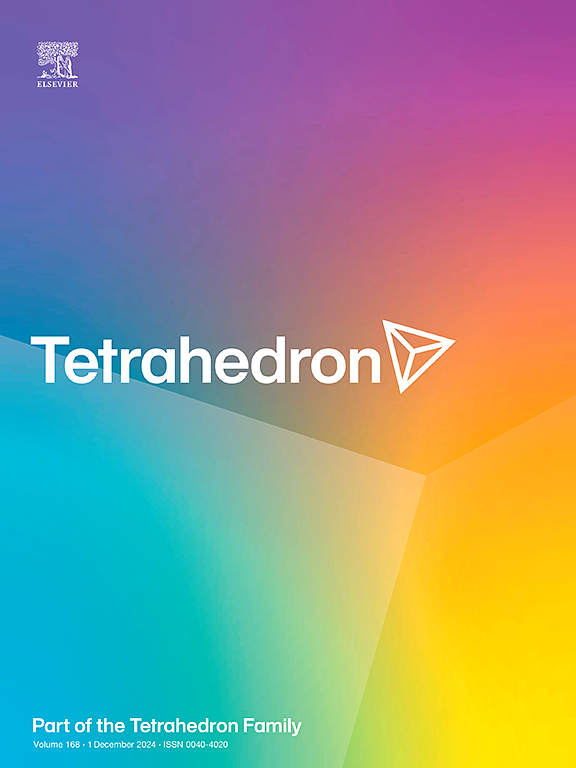Two new diterpenoic acids isolated from Carpesium divaricatum exhibited growth-inhibitory activity against epithelial–mesenchymal transition-induced cells
IF 2.2
3区 化学
Q2 CHEMISTRY, ORGANIC
引用次数: 0
Abstract
Epithelial–mesenchymal transition (EMT) has recently been reported to be associated with cancer invasion, metastasis, and resistance. Novel cancer treatment strategies should focus on controlling EMT. In a previous study, we established a screening method for growth inhibitors in EMT-induced (EMTed) Madin–Darby canine kidney (MDCK) cells. During screening, a methanolic extract of Carpesium divaricatum showed growth-inhibitory activity against EMTed MDCK cells. After bioguided extract purification, two new diterpenoids, designated divariterpenoic acids A (1) and B (2), were isolated from the extract, along with two known compounds, 2α,5-epoxy-5,10-dihydroxy-6α-angeloyloxy-9-isobutyloxy-germacran-8,12-olide (3) and divaricin B (4). The structures of new diterpenoids 1 and 2 were elucidated by 1D and 2D-NMR and HRESI-MS data. Compounds 1–4 displayed growth-inhibitory activity on EMTed MDCK cells, with compound 4 showing the strongest activity. Furthermore, the growth-inhibitory activities of compounds 2–4 on two EMTed human cancer cell lines, A549 and SAS, were evaluated. Compound 2 inhibited the growth of EMTed SAS cells. Compounds 3 and 4 inhibited the growth of EMTed SAS and A549 cells.

从金盏花中分离的两种新的二萜酸对上皮间充质转化诱导的细胞具有生长抑制活性
上皮-间质转化(Epithelial-mesenchymal transition, EMT)最近被报道与癌症侵袭、转移和耐药性有关。新的癌症治疗策略应侧重于控制EMT。在之前的研究中,我们建立了emt诱导(EMTed) Madin-Darby犬肾(MDCK)细胞中生长抑制剂的筛选方法。在筛选过程中,金盏花甲醇提取物显示出对EMTed MDCK细胞的生长抑制活性。经生物引导纯化,从该提取物中分离到两个新的二萜,分别命名为二萜酸A(1)和B(2),以及两个已知化合物:2α,5-环氧-5,10-二羟基-6α- angeloy氧-9-异丁基氧- germacan -8,12-olide(3)和二萜苷B(4)。新的二萜类化合物1和2的结构通过1D、2d nmr和HRESI-MS进行了表征。化合物1 ~ 4对EMTed MDCK细胞有抑制生长的作用,其中化合物4的抑制作用最强。此外,还对化合物2 ~ 4对两种EMTed人癌细胞A549和SAS的生长抑制活性进行了评价。化合物2抑制EMTed SAS细胞的生长。化合物3和4抑制EMTed SAS和A549细胞的生长。
本文章由计算机程序翻译,如有差异,请以英文原文为准。
求助全文
约1分钟内获得全文
求助全文
来源期刊

Tetrahedron
化学-有机化学
CiteScore
3.90
自引率
4.80%
发文量
439
审稿时长
34 days
期刊介绍:
Tetrahedron publishes full accounts of research having outstanding significance in the broad field of organic chemistry and its related disciplines, such as organic materials and bio-organic chemistry.
Regular papers in Tetrahedron are expected to represent detailed accounts of an original study having substantially greater scope and details than that found in a communication, as published in Tetrahedron Letters.
Tetrahedron also publishes thematic collections of papers as special issues and ''Reports'', commissioned in-depth reviews providing a comprehensive overview of a research area.
 求助内容:
求助内容: 应助结果提醒方式:
应助结果提醒方式:


